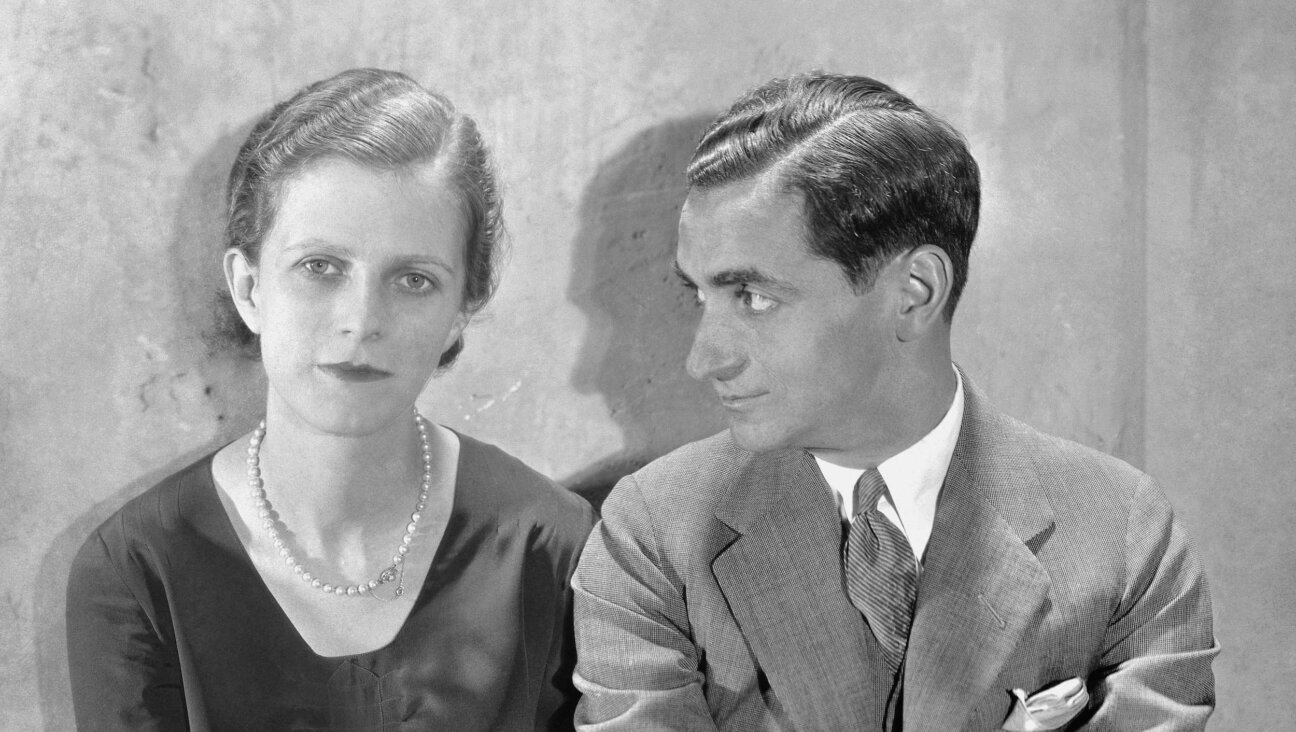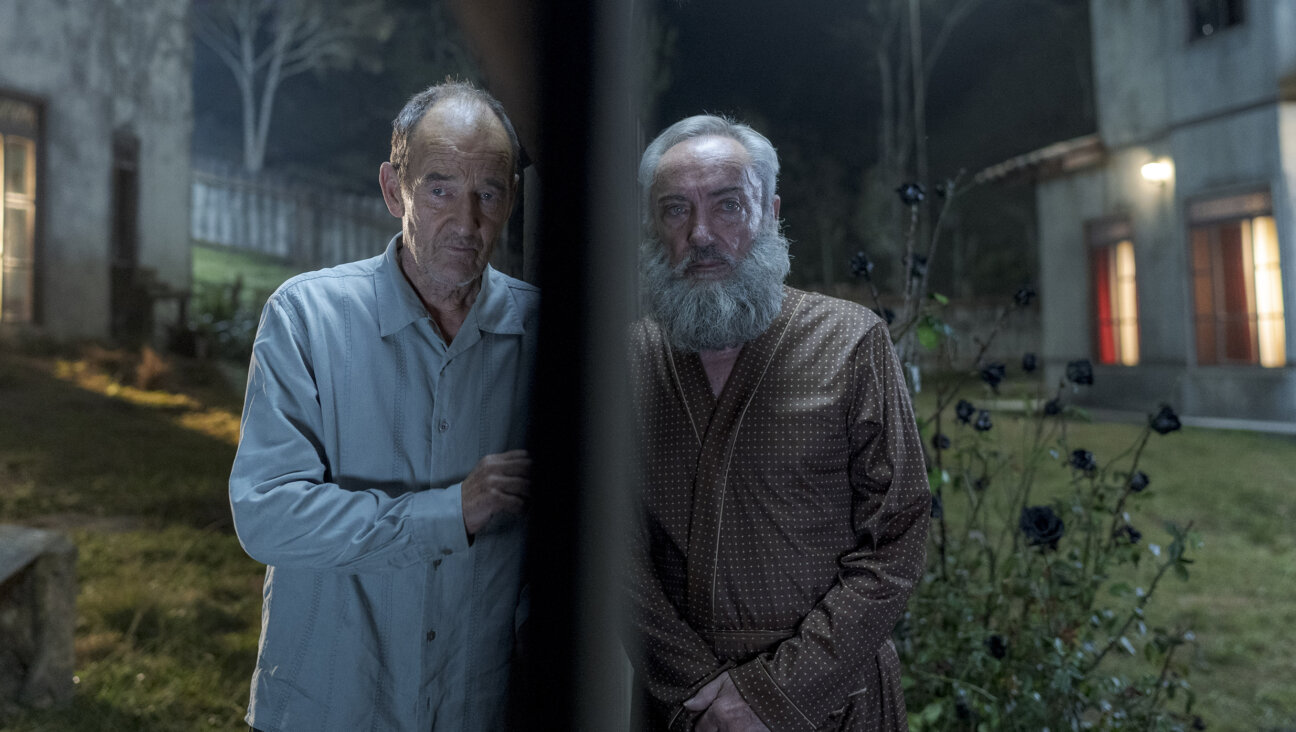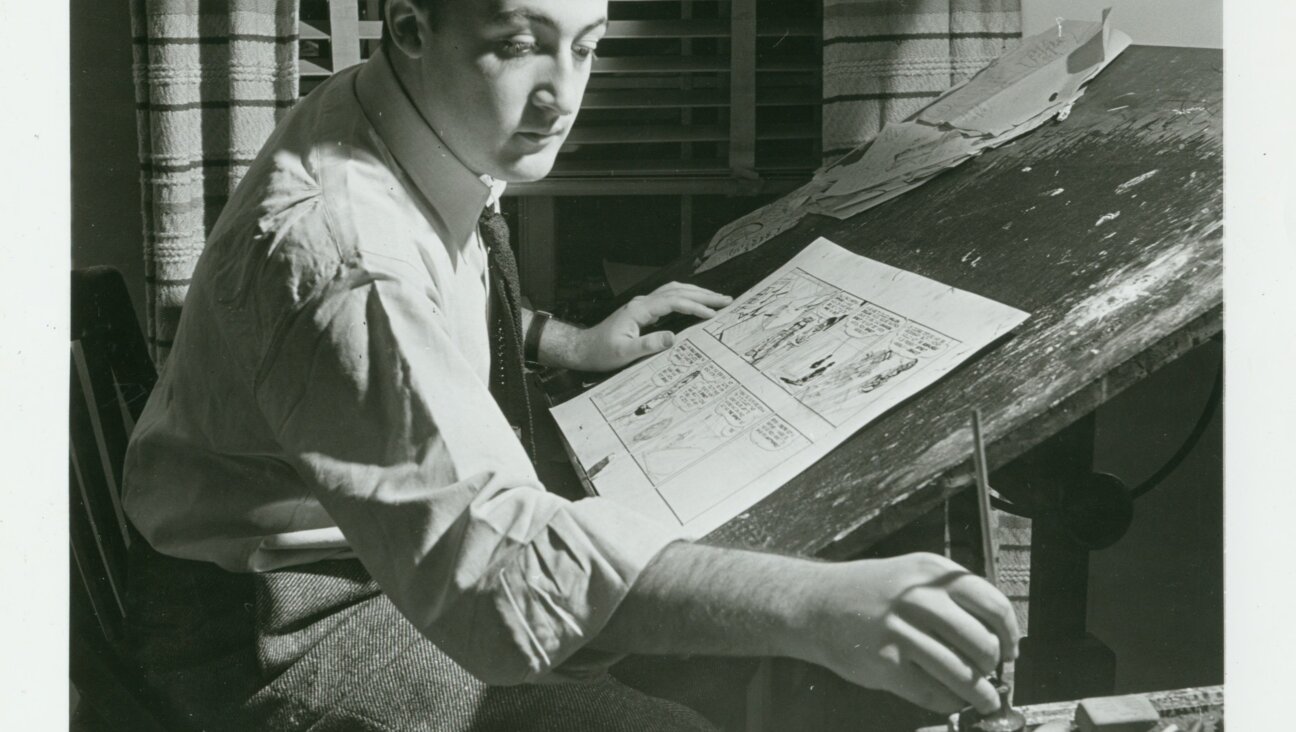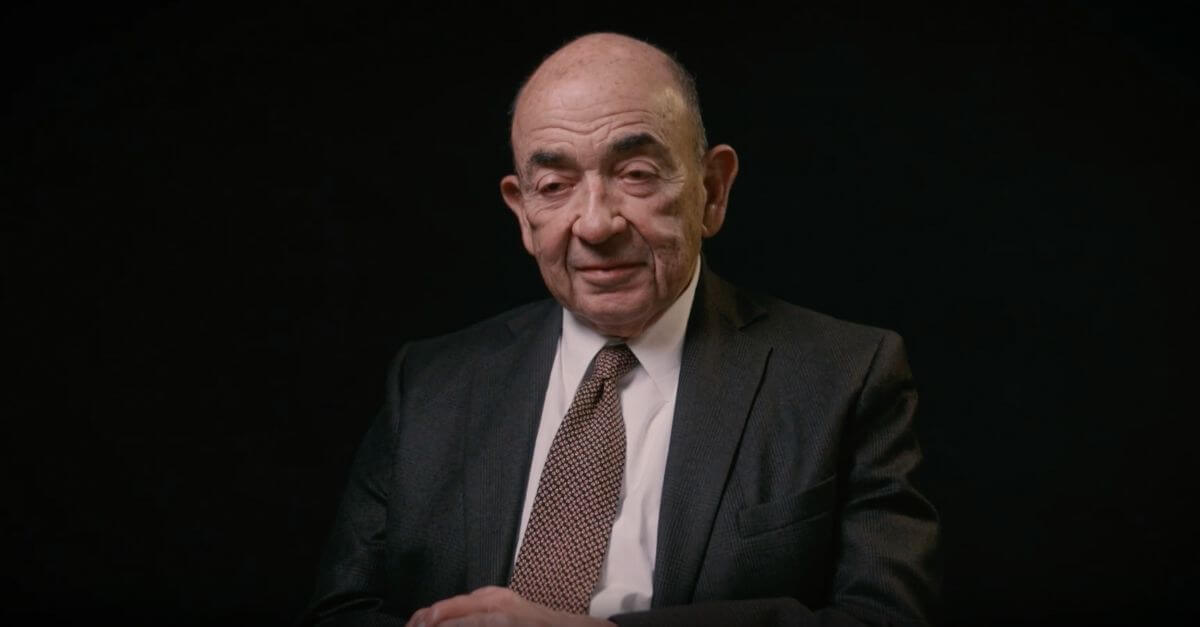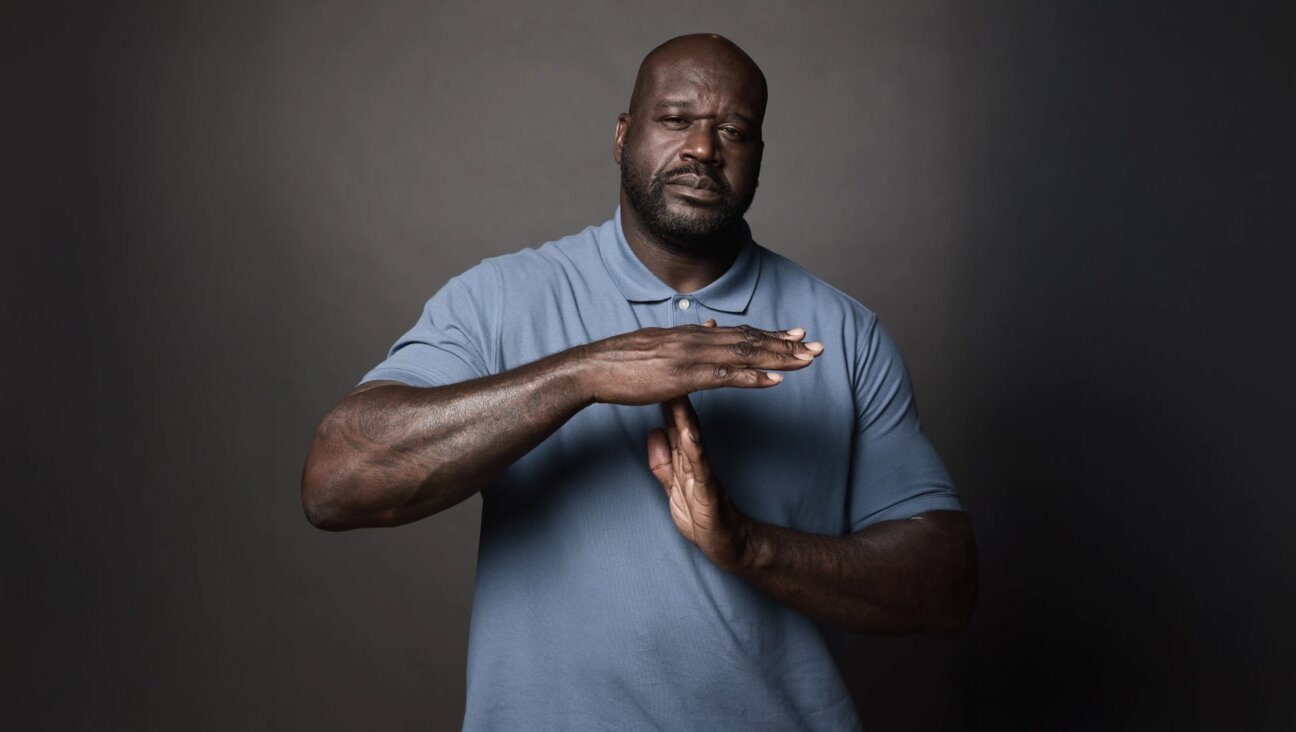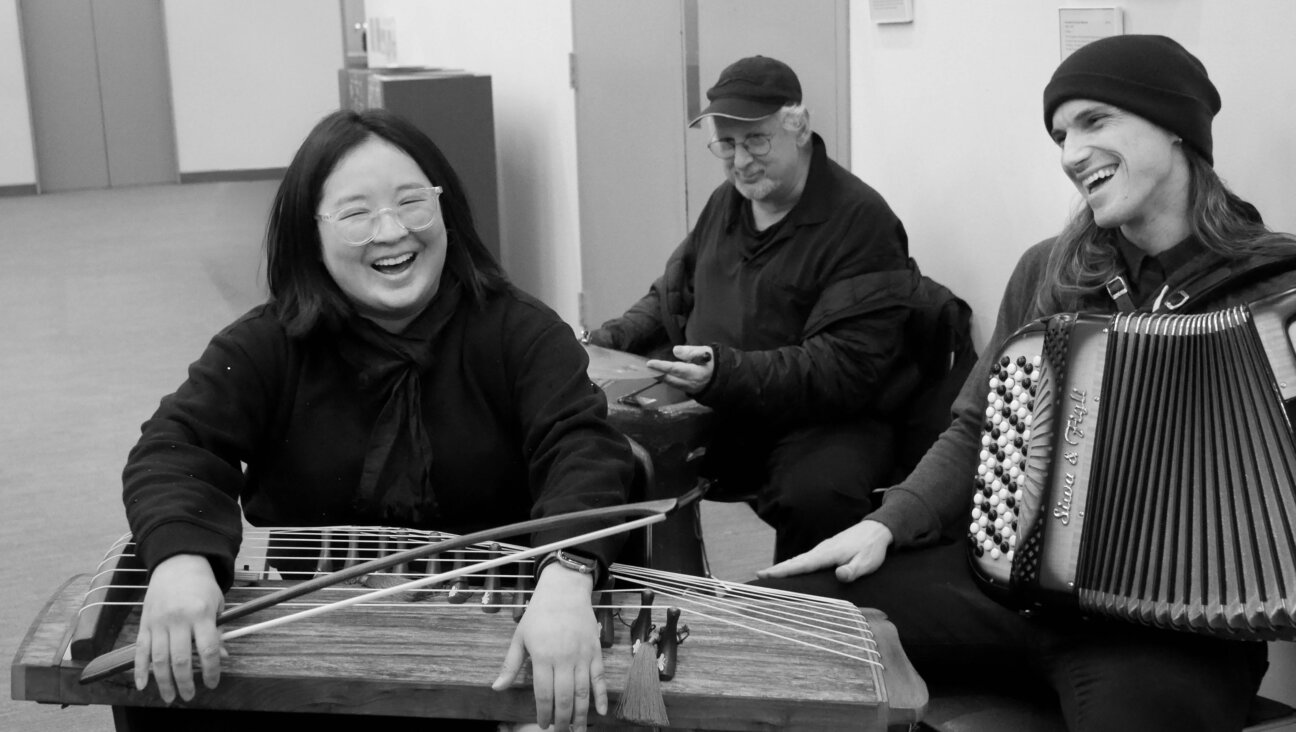Why a child’s first haircut may be Judaism’s sweetest ritual
The upsherin, though not as widely known as other Jewish rituals, marks a child’s transition out of infancy
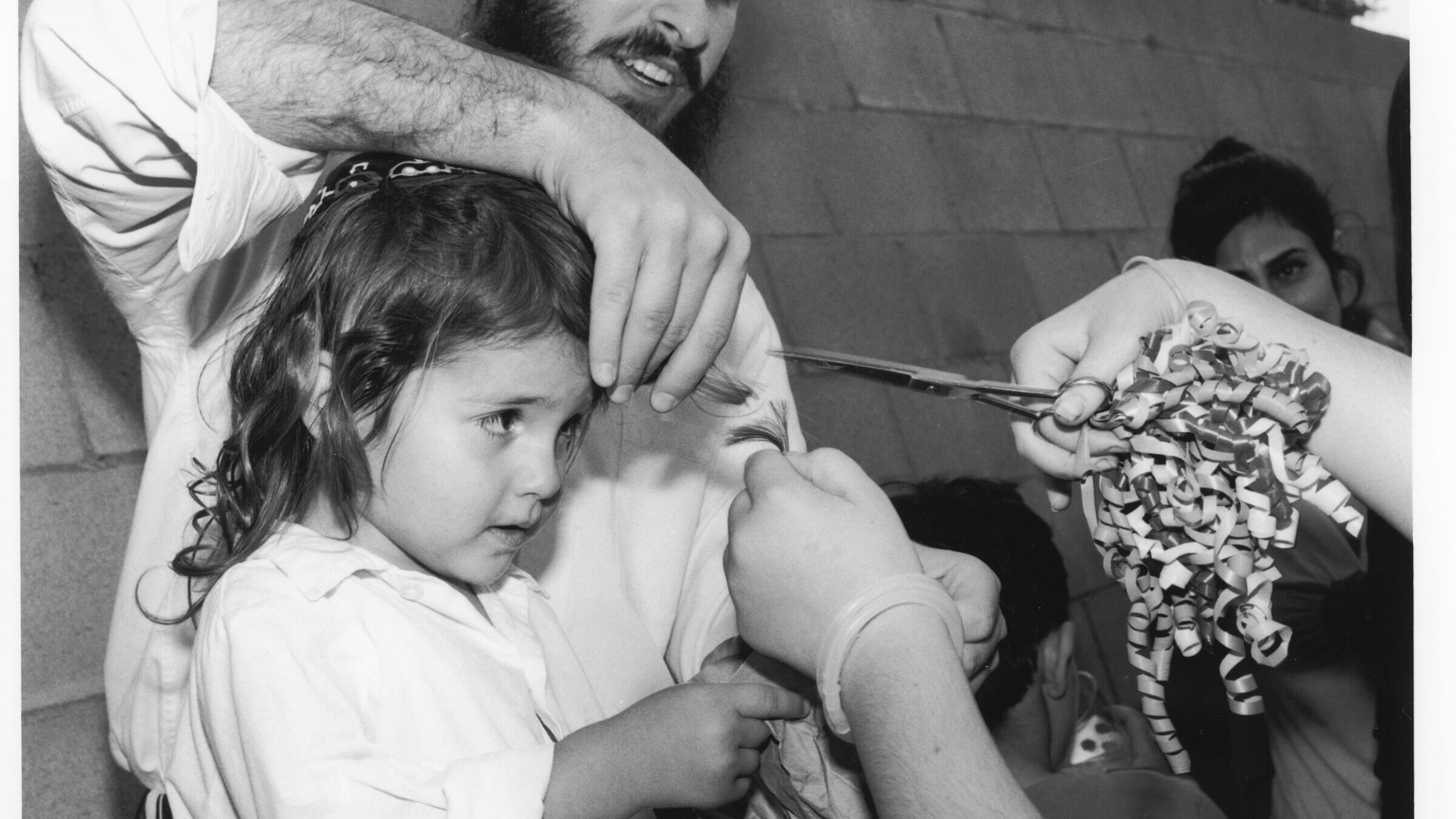
A rabbi performs the upsherin in California. Photo by Getty Images
On Sunday, thousands of Haredi Jews will gather on Mount Meron. They will sing, they will dance, and they will give 3-year-old boys their first haircuts: first cutting individual locks, later shaving everything but their sidelocks. Many others will perform the same ritual closer to home, with more echoes at the start of the school year.
That haircut — it’s called an upsherin in Yiddish — may seem very foreign to the ritual practices of progressive Jews, whose hairstyles tend to look a little different. I’m here to tell you that it contains something deep and powerful. In fact, my wife and I have performed an upsherin for each of our kids — both boys and girls — and it’s one of the best early childhood ritual decisions we’ve made.
The short ceremony is largely improvised and changes a little every time, but two essential elements remain constant. First, we drip honey on some Hebrew letters (a laminated placemat works nicely) for the child to lick. Second — and much more dramatically — we cut their hair for the very first time.
The honey is lovely, but it’s hard to exaggerate the emotional impact of that delayed first haircut. In the space of a few minutes, the long unruly locks that have been synonymous with the child give way to something intentional, something sculpted. For the adults in their life, it’s hard not to stare at a kid so completely transformed. It’s not quite as dramatic as a circumcision, but it’s surprisingly close.
The upsherin is an early childhood ritual that Judaism has but doesn’t really own. Ritualized first haircuts exist in Hinduism, Native American religions, and were once part of Polish culture. Many cultures ritually transform boys’ appearance at the beginning of boyhood. In many Western societies, including America, some boys remained “unbreeched” for the first years of their lives, only wearing trousers when they approached school age; this practice survived until the early 20th century.
Because the idea of a first haircut is so popular, it’s hard to know exactly when it began or whether it had a single origin. As Jewish rituals go, it’s not very old. First mentioned by 16th century kabbalists, it is likely a borrowing from a similar Muslim practice, with Eastern European Jews picking up the custom only in the last couple hundred years.
In one of the very few studies of the ritual, anthropologist Yoram Bilu argued that the upsherin should be seen as a kind of “secondary circumcision,” in which the father cuts his son’s hair as he (or a mohel) had previously cut his foreskin. This connection is bolstered by the biblical injunction against eating a tree’s fruit in its first three years; this fruit, says the Bible, is “uncircumcised.” (It is perhaps also relevant that it was at this age that Abraham supposedly discovered monotheism.)
These connections, together with the intensely male atmosphere of most Haredi upsherin celebrations, could give the impression that this is an inherently masculine ritual. Indeed, Amy Milligan recently observed that the ritual actually serves to introduce boys to the social meaning of their gender.
This may be true in Orthodox contexts, but it is also easily reversed in more egalitarian ones. In fact, what’s amazing about the upsherin is the ease with which its gendered elements can be tossed. The idea that the father only steps up to parental duties when a child turns 3 isn’t essential; nor is the idea that only boys should celebrate the start of their educational journey. What is universal is the transition from infancy to childhood, and the upsherin can be a celebration of this transition without loss of anything essential. The passage out of diapers and cribs and into language and full mobility that typically happens around this age is always remarkable; whether its celebration is gendered is a choice.
The irony, of course, is that most kids will never remember their upsherin. That’s fine, because the ritual isn’t for them; it’s for their parents. For the first three years of life, the primary concern in a parent’s mind is keeping their child alive and healthy; after age 3, attention turns to what kind of life the parent wants to prepare for that child. Though kindergarten is still a few years away, educational goals begin to form — and with them, the possibility of raising a child to learn and love the Torah. While a bar mitzvah celebrates the culmination of a certain phase of Torah study, the upsherin — after which parents may teach their child to wear a yarmulke and tzitzit and say basic prayers — celebrates that journey’s commencement. It also makes the parents acutely aware of the role that they play in that journey.
This all gets played out in the haircut itself, in the transformation of the raw substance that is a newborn child into a new, molded shape of a small person. In the jaw-dropping change in appearance that every upsherin brings, parents are presented with the sheer power of their ability to cast this person — and the stark assurance that their offspring will continue to change long after they have left the house, that they may in fact become just as unrecognizable as they were at birth.
In marking the transition out of infanthood, the upsherin ends up being about loss as much as it is about growth. It’s a goodbye to one phase of parenting and materialization of the erstwhile abstract notion that a child will not always be like this; that their parents will not always be their center of gravity, that everything moves. It’s the barest glimpse of that empty nest, a taste of a feeling that for the moment feels very foreign. It’s a reminder of what we’ll never fully know.

